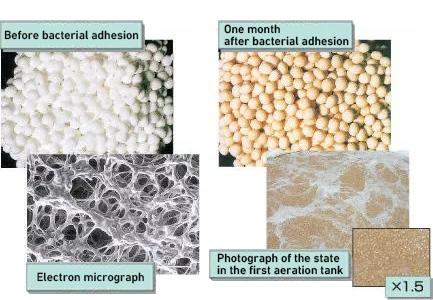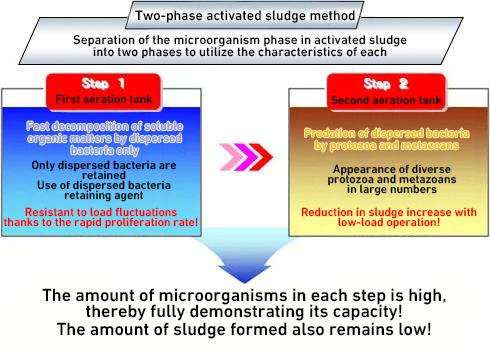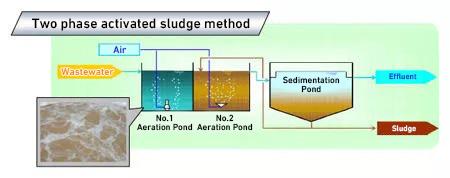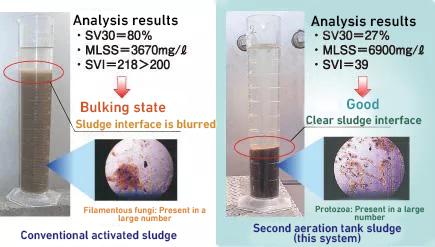Two-Phase Activated Sludge System
It can simultaneously increase processing capacity and reduce sludge.
Two-Phase Activated Sludge System
It can be achieved by modifying only a part of the existing aeration tank, and does not require installation of a new water tank.
Operation management is easy without addition of new utilities, etc.
System overview
- Processing capacity can be increased with simple modification of the existing aeration tank
Fast decomposition of organic matter by dispersed bacteria. Significant increase in processing capacity (results of 30% or more). - Sludge amount can be reduced
Sludge reduction results in actual machines: 60 to 80% - Less susceptible to bulking
- Resistant to load fluctuations
Dispersed bacteria proliferate rapidly (at least 10 times that of activated sludge) and can follow the load fluctuations.
Dispersed bacteria retaining material

Two-phase carrier method

System introduction flow
Conventional

This system

Introduction case example
Industry type: Wastewater from manufacturing plant for seasoning, etc.
| Existing | After modification | |
|---|---|---|
| Water treatment quantity | 640m3/d | 720m3/d (maximum of 840m3/d) |
| BOD concentration in raw water | 1500mg/L | 1500mg/L |
| BOD concentration in treated water | 25mg/L or less | 25mg/L or less |
| Sludge SVI | 200 or higher | Around 40 |
| Sludge generation rate (organic) | 100% | 20~40% (Achieve reduction by 60 to 80%) |
Example improvement achieved by system introduction

Products
- Electrostatic Precipitator
- Fabric filters
- Tunnel Electrostatic Precipitator
- Organic Solvent Exhaust Gas Treatment System
- Water Treatment
- Wastewater Treatment System
